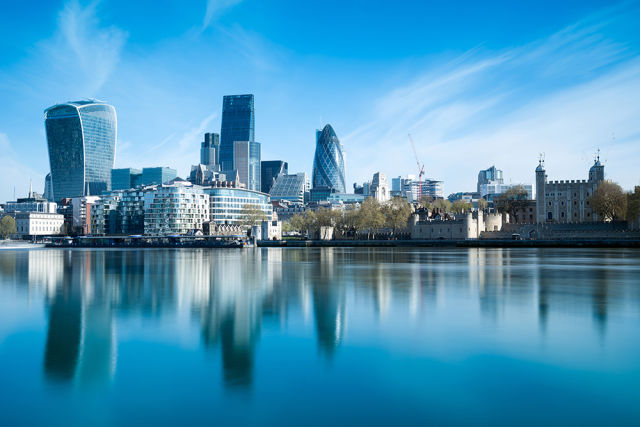Know your labels

Angela Reid outlines the numerous labelling schemes available for buildings, and notes the importance of understanding what each offers owners and managers.
Although the building sector is the largest contributor to global greenhouse gas emissions, it offers significant potential for energy efficiency savings. Consequently, purchasers are becoming increasingly interested in the environmental aspects of a product’s manufacture and supply.
However, with more than 65 building ecolabels and an estimated 600 green product certifications in the world, the challenge for the construction industry is how it can make effective environmental choices, and how manufacturers can add credibility to the products they offer.
The term ‘Green Building’ brings together a vast array of practices and techniques aimed at reducing, and ultimately eliminating, the impact buildings have on the environment and human health. It is a cornerstone in the global drive to enhance environmental sustainability and it promotes energy efficient building designs through the effective use of energy, water, and other resources. It often emphasises taking advantage of renewable resources, while reducing waste, pollution and environmental degradation. Protecting occupant health and improving employee productivity is also at its core, as well as the use of recycled construction materials.
The global building industry is complex, with multiple product players within the supply chain. A report from the World Green Building Council (Doing right by planet & people. The business case for health and wellbeing in green building. April 2018) defines the business case for building green as being:
• Reductions in energy consumption, greenhouse gas emissions and air pollutants - companies can save money by occupying a green building.
• Improvements to occupant wellbeing, satisfaction and productivity - employees prefer green buildings that make them feel healthier and more productive.
• Strong financial returns for the companies owning or occupying these buildings - a building’s asset value increases the greener and healthier it is.
In order to gain a competitive advantage, manufacturers often use labelling, voluntarily providing environmental information about their products. The challenge for investors, architects, developers, owners/tenants and building operators is how they measure, compare and make choices about the environmental footprint of different building products.
Many groups have tried to get on the green bandwagon, each bringing new environmental claims, certification standards, and labels. Some manufacturers have also created their own green labels, which often have no independent verification, but are simply used as a sales tool. Whether manufacturing or selecting products, it is therefore easy to become side-tracked by claims that do not provide substantive assurance of environmental performance.
With a plethora of standards, ratings, and certification programmes, even those that are experienced with green labelling can become confused by which of the many alternative eco claims are relevant and robust. There are a vast range of country-specific Green Building rating schemes, each having their own ecolabel, which both product manufacturers and building developers can use to prove their green credentials. For example, standards and certifications include the following:
• Beam (Hong Kong) - processes covering all building types, including mixed use complexes, both new and existing to assess, improve, certify, and label the environmental performance of buildings.
• BREEAM (UK) - property industry’s recognised benchmark for the environmental rating of new and major refurbished buildings.
• CASBEE (Japan) - building assessment tools for pre-design, new construction, existing buildings being renovated.
• Energy Star (USA) - government certification using a benchmarking method.
• Green Globes (USA & Canada) - Green Building guidance and assessment programme for existing buildings and new construction.
• Green Star SA (South Africa) - Green Building rating system for office, retail and multi-unit residential.
• LEED (USA and globally recognised) - Green Building certification programme that recognises best-in-class building strategies and practices.
• Pearl Rating System for Estidama (Abu Dhabi) - Green Building rating system for community, buildings, villas, temporary buildings.
• Green Star (Australia) – recognised benchmark for the environmental rating of the design, construction and operation of new buildings, fit-outs and communities.

• Well Certification (international) – framework to help improve the health and wellbeing for all building occupiers.
Ecolabels are intended to educate and increase stakeholder awareness of the environmental impacts of a product. They should also encourage purchasers to buy building products with a lower environmental impact. Producers of environmentally superior building products therefore have an incentive to use environmental marketing techniques such as ecolabelling to differentiate their products.
However, with more than 65 building ecolabels worldwide, stakeholders within the construction industry must determine which are most credible and applicable to their particular project. There is also a lack of independent testing bodies and accredited certification bodies to be able to test and prove the compliance of products against the standards set by organisations promoting these ecolabels.
The most authentic and trustworthy certifications are those awarded by an independent third-party that has no business or monetary relationship with a product’s manufacturer, or a building’s contractor, designer or specifier. Stakeholders need the support of these independent experts to effectively deal with the proliferation of ecolabels relating to Green Building products, as well as identify successfully which category a label falls into, be that government, proprietary, or independent agency.
ISO 14024 (Environmental labels and declarations -- Type I environmental labelling -- Principles and procedures) provides world-class specifications for operating ecolabel schemes in an increasingly global market that has many different regional systems. It establishes the principles and procedures for developing environmental labelling programmes, for assessing and demonstrating compliance, and also establishes the certification procedures for awarding the label.
The principles of ISO 14024 include the following stipulations:
• Environmental labelling programmes should be voluntary.
• Compliance with environmental and other relevant legislation is required.
• The whole product life cycle must be taken into consideration when setting product.
• Environmental criteria, e.g. extraction of resources, manufacturing, distribution, use and disposal relating to relevant cross-media environmental indicators.
• Product environmental criteria need to be established to differentiate environmentally preferable products from others in the product category when these differences are significant.
As an example ISO 14024 has been adopted as a benchmark by the Global Ecolabelling Network (GEN), a non-profit association of leading ecolabelling organisations worldwide, founded in 1994 to help protect the environment by improving, promoting, and developing the ecolabelling of green products and sustainable services.
Buildings account for a large amount of land use, energy and water consumption, as well as air quality and atmosphere alteration. Reducing the volume of natural resources buildings consume, and the amount of pollution given off, is therefore seen as crucial for future sustainability.
Green Building is aimed at reducing, and ultimately eliminating, such negative environmental impacts. Consequently, the environmental benefits of a manufacturer’s building products are now becoming a core element of their marketing strategy.
However, with a confusing array of ecolabel and certification options, stakeholders need substantive assurances from manufacturers of a product’s environmental integrity. The construction business is increasingly crowded and complex, with market-share often being fought for on a global scale. Ecolabels that use the globally recognised ISO 14024 methodology could therefore deliver a competitive advantage by increasing access to existing and new markets.
Products and processes that consistently comply with national and international standards help to maintain consumer confidence and protect a brand’s reputation. To remain competitive, and drive business growth, the ability to anticipate the changing complexities of the Green Building products market is therefore essential.
Angela Reid is a director and environmental engineer of TÜV SÜD’s UK Real Estate division







